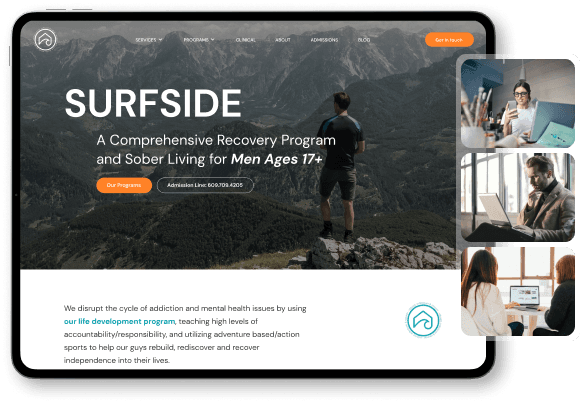blog
The Role of Secure Website Design in Protecting Client Privacy
Jan 12, 2025
In the digital age, ensuring client privacy is a top priority for mental health professionals. Your website isn’t just a virtual storefront—it’s a space where clients may seek support, share sensitive information, or make appointments. Without a secure design, you risk compromising their trust and data.
In this article, we’ll explore why secure website design is essential for mental health providers and share actionable strategies to protect client privacy.
Why Secure Website Design Matters for Mental Health Providers
Protecting Sensitive Client Information
Mental health websites often collect personal information through contact forms, appointment schedulers, or client portals. If not properly secured, this data can be vulnerable to breaches, putting your clients’ privacy and your reputation at risk.Building Trust and Credibility
Clients are more likely to reach out when they feel their information is safe. A secure website fosters trust by demonstrating your commitment to confidentiality and professional standards.Compliance with Legal Standards
Healthcare providers must adhere to privacy laws like HIPAA (in the U.S.) or GDPR (in the EU). A secure website helps ensure compliance, reducing the risk of legal penalties.
Key Features of Secure Website Design
1. SSL Certificates
An SSL (Secure Sockets Layer) certificate encrypts data transferred between your website and users, preventing unauthorized access. Websites with SSL display "https://" in the URL and a padlock icon, signaling security to visitors.
2. Secure Client Portals
If your website includes client portals, ensure they require strong, unique passwords and use two-factor authentication (2FA) for added security.
3. Encrypted Contact Forms
Ensure that any forms collecting client data are encrypted and transmitted securely. Avoid storing sensitive information on the website server longer than necessary.
4. Regular Security Updates
Keep your website platform, plugins, and themes updated to patch vulnerabilities. Outdated software is a common target for cyberattacks.
5. Data Minimization Practices
Only collect the information necessary for your services. Avoid asking for overly sensitive details unless absolutely required.
6. Privacy Policies
Display a clear privacy policy that outlines how client information is collected, stored, and protected. This transparency builds trust and aligns with regulatory requirements.
Best Practices for Maintaining Website Security
Work with Trusted Web Hosts: Choose hosting providers with robust security measures, including malware scanning and backup options.
Enable Firewalls: Use web application firewalls (WAFs) to block malicious traffic.
Monitor Activity: Regularly monitor your website for unusual activity or unauthorized access attempts.
Conduct Security Audits: Periodically test your website’s security measures to identify and address vulnerabilities.
How Secure Design Enhances the Client Experience
A secure website doesn’t just protect data—it also creates a stress-free experience for users. Clients visiting your site should feel confident in its reliability and safety, allowing them to focus on seeking support instead of worrying about their privacy.
Conclusion
For mental health providers, secure website design is non-negotiable. By prioritizing client privacy through robust security features, you build trust, ensure compliance, and create a safe environment for clients to take the first step toward healing.
If you’re ready to enhance your website’s security and protect your clients, our team is here to help. Contact us today to create a secure, client-focused online space.
Do you find this article useful?
We create beautiful websites for mental health businesses that will help families and people in need to make the right choice. Let us help you improving your website, we got the experience and the passion to convert visitors into customers.
Prev
Next



